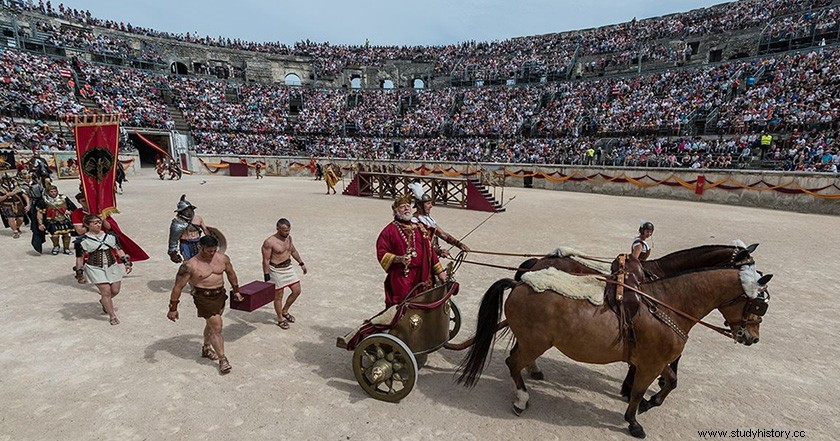
Without a doubt, Roman amphitheaters are one of the largest showcases the power of Roman culture. Few images, like that of the Colosseum in Rome, are capable of reflecting this power by themselves:gladiators, beasts, the best war artifacts, and even ships had a place in the greatest spectacle that could be seen in Rome. In such a way that emperors, senators, governors, or mayors spared no effort to keep their citizens happy. If at first these shows were carried out in improvised wooden constructions, the economic power that the Empire achieved from the first century of our era, led to the proliferation of these spectacular buildings, by the four cardinal points of the same.
Today in Walking Through History we want to present some of them, we do not want to focus only on the best preserved, but on those that for different reasons can arouse the curiosity of any addict to Roman culture.
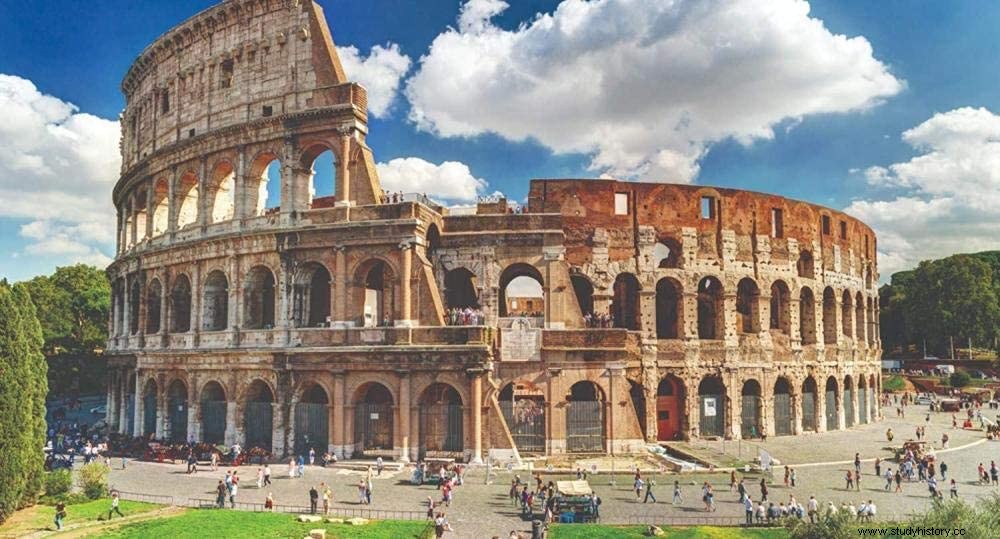
You can collaborate with our blog, comparing this puzzle of 1000 wooden pieces
Pompeii Amphitheatre.
We start with the oldest of all those currently known, its construction dates back to 70 BC. C., that is, practically a century before the famous Colosseum in Rome. It had a capacity for about 20,000 people, and was financed by the duoviros Marco Porcio and Cayo Quintio Valgo. According to some reports, on hot summer days, spectators were showered with scented water. Evidently it ended its days like the rest of the city, after the eruption of Vesuvius in the year 79 of our era.
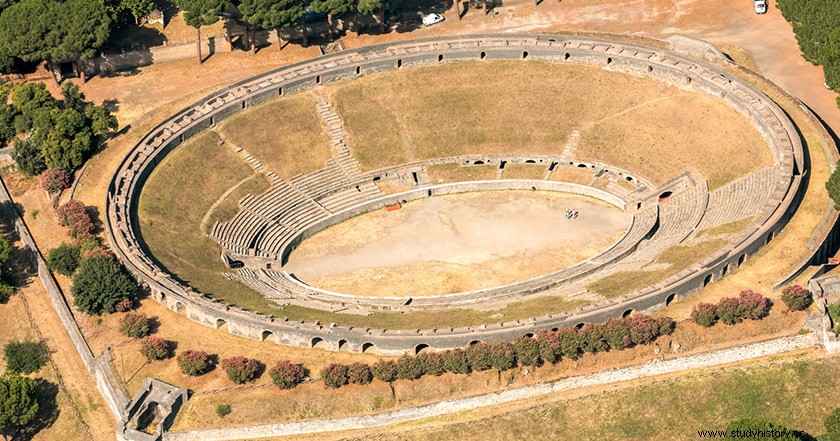
It is clear that in its almost 150 years of history many anecdotes must have happened. But of one of them, by the way, unfortunate, we have been recorded thanks to the senator, and historian Cornelius Tacitus. According to it, residents of Pompeii itself and the nearby city of Nocera met in the amphitheater around the year 59. The reason could be the fight between the two gladiators of both cities. At one point, the viewers go from insults to hands and finally to weapons, causing numerous deaths, mainly among Nocera's residents. Days later, the Senate, together with Emperor Nero, decreed the prohibition of shows in the Pompeii Amphitheater for ten years. But only three years later there is a great earthquake, in exchange, Pompeii's punishment is lifted.
Lucca amphitheater square
Without leaving Italy, we will travel north to Lucca, one of the most important medieval cities in Tuscany. In it we find one of the most significant examples of the evolution of Roman amphitheaters during the Middle Ages. With a simple walk through the town it would be difficult for us to find the location of the old amphitheater, but from a bird's-eye view, everything changes.
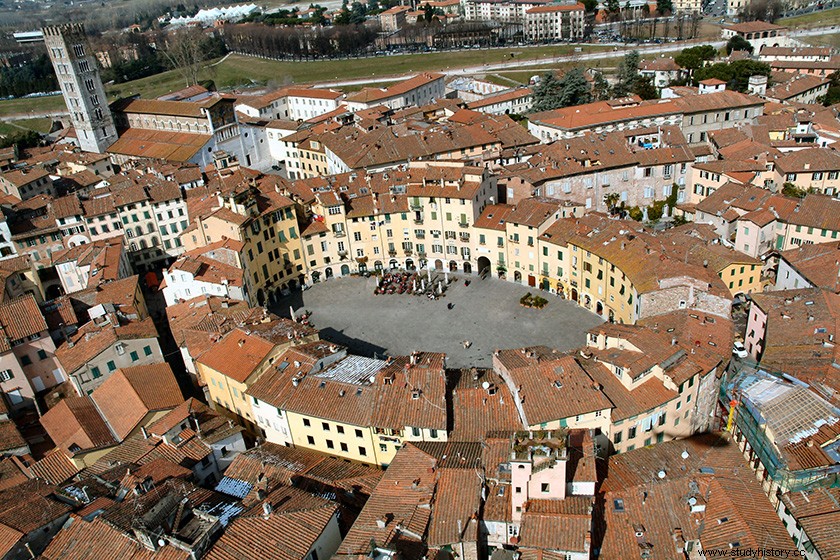
The amphitheater was built over a long period of time between the 1st-2nd centuries AD. C., its total capacity was about 10,000 spectators. As was customary during the Middle Ages, the building was swallowed up by the narrow medieval streets, and the cavea was also used for small medieval houses. Already in the 19th century, the city authorities commissioned one of his favorite sons, the architect Lorenzo Nottolini, to build a square to house the market. His solution was to empty the entire contour of the amphitheater arena to locate the square, today many remains of the old stands of the amphitheater of Lucca are preserved inside the shops and cafeterias.
Amphitheater of Pula.
The next destination takes us to present-day Croatia, specifically to the coastal city of Pula, on the Istrian Peninsula. There we find one of the best preserved Roman amphitheaters in the world. It was built on the same site as the old wooden building from the time of Augustus, and it was built over a long period of time, until it was finished off in the time of Emperor Vespasian or his son Titus, therefore, practically in unison. than the Roman Colosseum. It had a capacity for 23,000 spectators, who surely enjoyed the combats of the famous Thracian gladiators, given its proximity to this Roman province.
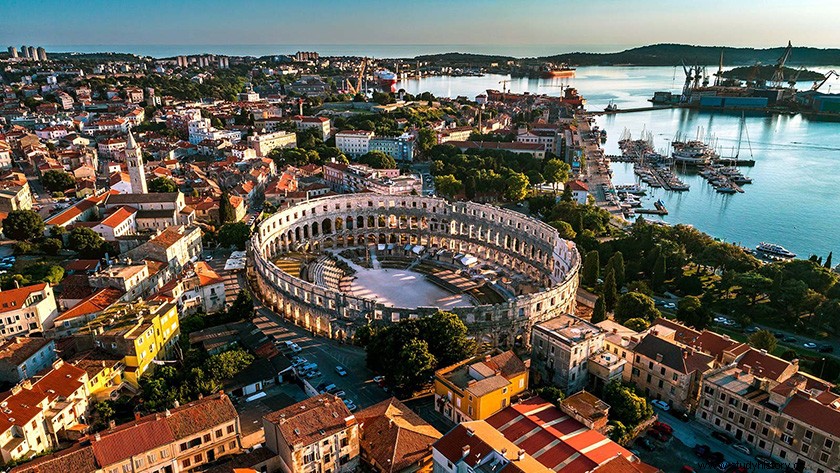
It is evident that its exceptional state of conservation is not the result of chance. Its use was extended over time, since until the seventh century, and despite the prohibition of Emperor Honorius, some encounters between those sentenced to death and the beasts continued to take place. During the Middle Ages it had different functions, including a market or stable. Although its stones have been the subject of some looting, it seems that its public ownership, for long periods of time, saved it from ruin. The Republic of Venice, the rich merchants of the Mediterranean are the "culprits" of this good state. In the XV-XVI centuries, it was the subject of different visits by Venetian architects, since the building appears in numerous sketches from this time. Undoubtedly one of the most famous, Andrea Palladio, was inspired by him to elaborate his architecture, but take a look at the Basilica Palladiana in Vicenza.
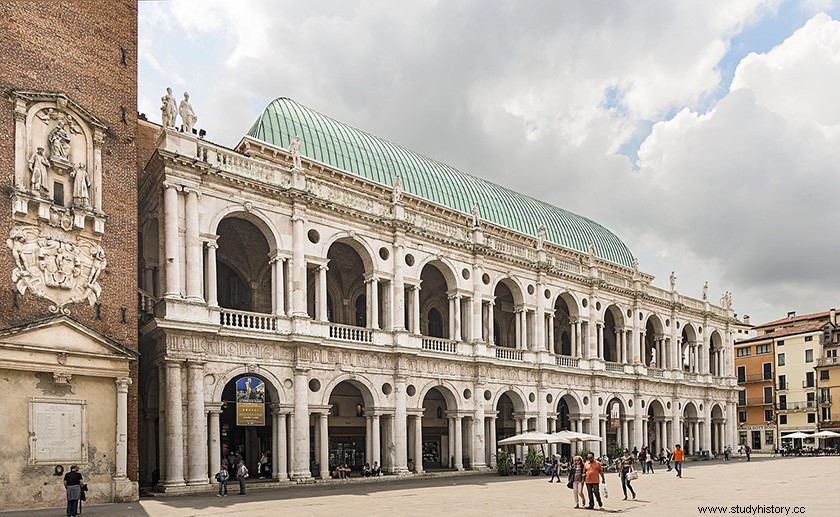
Xanten Amphitheatre.
Our next protagonist did not suffer the same fate as the previous one, his stones were extracted one after another to build the medieval city of Xanten, located in western Germany, to few kilometers from Holland. But we must go to find the Xanten Archaeological Park. Allow me a very personal appreciation, since without a doubt it arouses my curiosity, that Germany, forget its pride of not having been completely Romanized, to show us its Roman past like few other countries. Meanwhile, in other places, some sectors try to underestimate six centuries of Romanization.
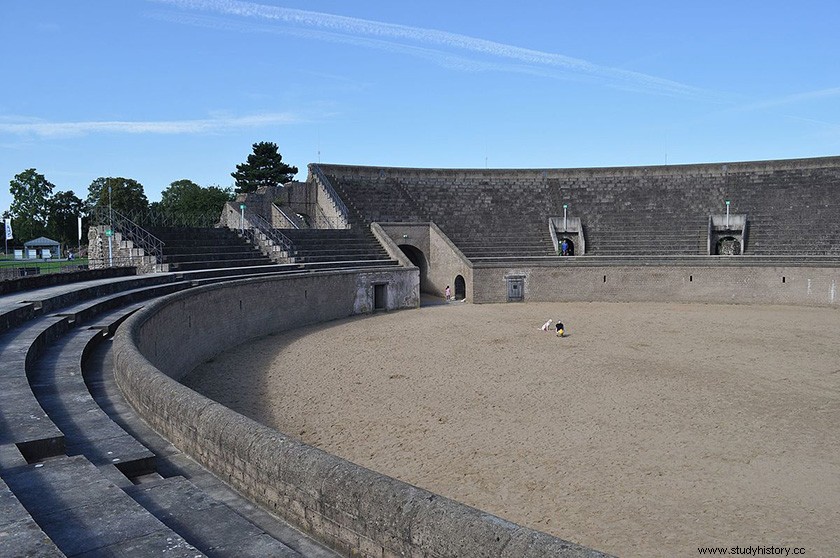
The Roman Empire settled in this territory in the year 13 BC. C., from there came the Roman legions that tried for two or three decades to conquer Germania, they did not succeed, but the place remained as a protection of the imperial limes. In the year 98, Emperor Trajan turned it into a colony, with the name of Colonia Ulpia Trajana, from that moment the construction of typical Roman buildings was promoted, among them, the amphitheater of which in the mid-twentieth century only the foundations remained . The city was devastated several times by the Frankish and Germanic tribes, with each destruction came the subsequent repair.
Today, and since 1977, the Ulpia Trajana colony has become a theme park of the Roman world, and a leading tourist destination in Germany. Its amphitheater receives musical and theatrical shows, but what most attracts followers of the Roman world is the most important historical reenactment event in the German country, which is held every two summers in the facilities of the remodeled Roman amphitheater of Xanten.
The supposed gladiatorial school of Virunum.
It is time to travel to the south of Austria, specifically to the Zollfeld region, where we will find the remains of the ancient Roman city of Virunum . This city was founded in the time of Emperor Claudius, and since its rediscovery in the 19th century, it has given more questions than answers. It seems that it became the small capital of the Roman province of Noricum, so it was always in the sights of the Germanic tribes, especially the Marcomanni. It had its greatest boom since Marcus Aurelius, and especially with the severe emperors.
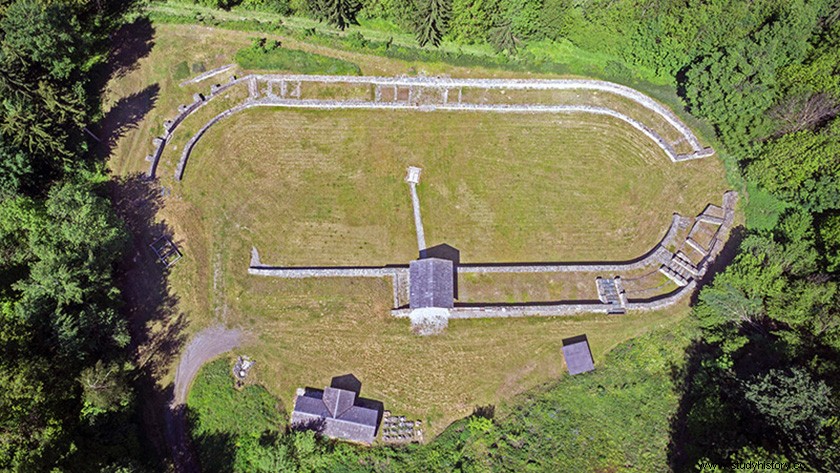
Its small amphitheater of no more than 3,000 spectators, a very unusual figure among Roman amphitheaters in the world, has led to various speculations. Only the lower rooms of the stands were built in stone, the latter were made with carved wood to make a hole in the forest, where the amphitheater should be located. The discovery in 1930 of slabs sculpted with the image of the goddess Pax-Nemesis, considered the patron saint of gladiators, and deliberately hidden with several coins from the time of Constantine, has led to speculation that the Virunum amphitheater was a school for gladiators. . If you want to know more about the types of gladiators, don't miss this article by my friend Maribel:different-types-of-gladiators
Italica Amphitheater.
A destination from Roman Baetica cannot be missing from this list. If the Roman amphitheaters are one of the greatest expressions of the economic power of the Roman Empire, this province in the south of the Iberian Peninsula has sufficient reason to be considered one of the most important in the entire Empire. The oil, the wine, the salted preserves, the garum, or on the other hand the minerals of these provinces, flooded the markets of the entire Roman Mediterranean. There are several examples of amphitheaters that were subsidized with this trade, Córdoba, Cádiz, Porcuna or Carmona, but the best preserved of all is that of Itálica.
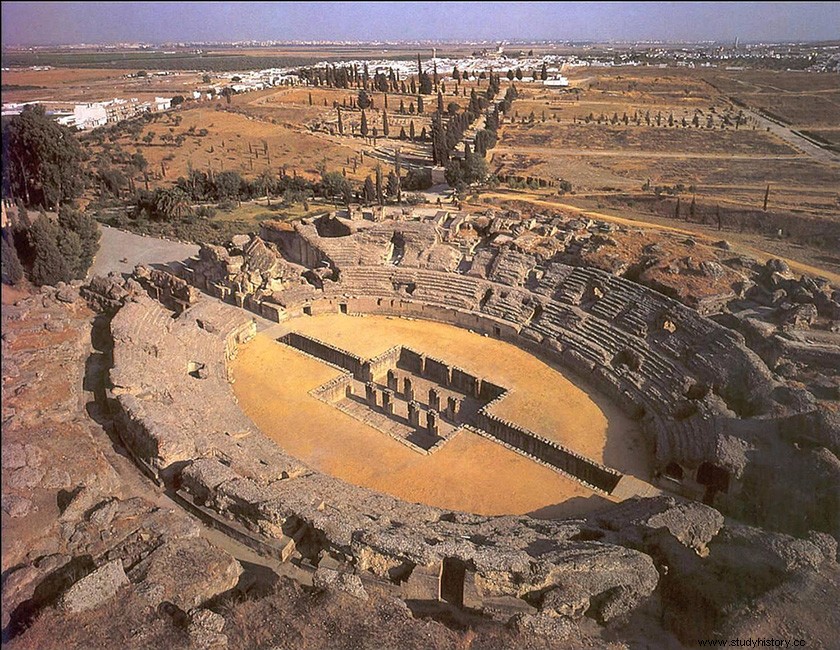
Commissioned to be built in the time of the second Hispanic emperor of that municipality, Hadrian, it became one of the most important in the entire Empire in the 2nd century, with a capacity for 25,000 spectators. Its construction was not without problems, its location to take advantage of two elevations of the land, to directly dig the seats of the stands, led to the mistake of placing it in the bed of a stream. Therefore, a network of pipes had to be placed in the subsoil of the same, which, being clogged due to lack of maintenance, flooded the enclosure with mud and sludge.
Today it is known worldwide thanks to the recordings that have been made by the Game of Thrones series, hopefully it will also make it one of the most visited.
Arena de Nimes.
In Walking through History, we have already spoken on occasion of the use in the south of France of Roman amphitheaters as new bullfighting arenas since the 19th century, it was on the occasion of our article on the amphitheater of Arles. With the inclusion of its neighbor, the Arena de Nimes, we just want to corroborate that, although we are for or against the festival of the bulls, we cannot deny that its reuse is a good measure for its maintenance.
Built from the year 100, and for nearly 40 years, it became one of the largest in the Empire, with room, like the previous one in Italica, for about 25,000 spectators. Although unlike that one, the stands of Nimes were not supported on the rock, but following the model of the Roman Coliseum, large walls were raised to locate the cavea for the spectators.
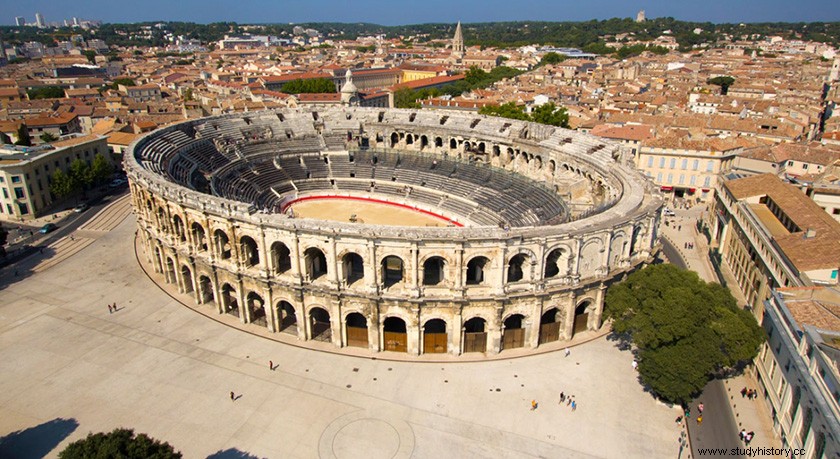
Today it is usually considered one of the best preserved Roman amphitheaters in the world, once again we have to go to its history, to find the keys to that title. After the fall of the Roman Empire, the Visigoths of Septimania surrounded it with a strong wall to protect themselves from Frankish attacks. Later, in the 12th century, the Counts of Toulouse built a castle inside, turning the stands into defensive walls. Finally, from the 14th century onwards, it was abandoned to its fate, but its excellent state of preservation led its interior to be filled with houses and Christian hermitages. In the 18th century, when it was decided to recover it for its original use, that is, for shows, some 700 people lived inside it, who had to be relocated to other areas of Nimes.
Apart from bullfights, concerts, and various shows, it also offers a spectacular gathering of history reenactors on the first weekend of May, “the great Roman games ”, his image has served to illustrate this article.

El Djem amphitheatre.
We leave one of the most spectacular Roman amphitheaters in the world for last, we can also say that it has a place in this list for different reasons:it was one of the last to be built, one one of the largest in the world with capacity for 35,000 people, this aspect reveals the enormous importance of the Roman province of Africa. And of course for being one of the best preserved.
To meet him, we must travel to Tunisia, specifically to the town of El Djem, with almost 50,000 inhabitants and which preserves this impressive Roman amphitheater in the center of the city. The excavations gave conclusive data that the El Djem amphitheater was the third in a row to be built on the same site. If the former had room for about 6,000 spectators and the latter for 35,000, the data shows us the enormous power that the city, Thysdrus, acquired in times of the Empire, thanks to its production of olive oil.
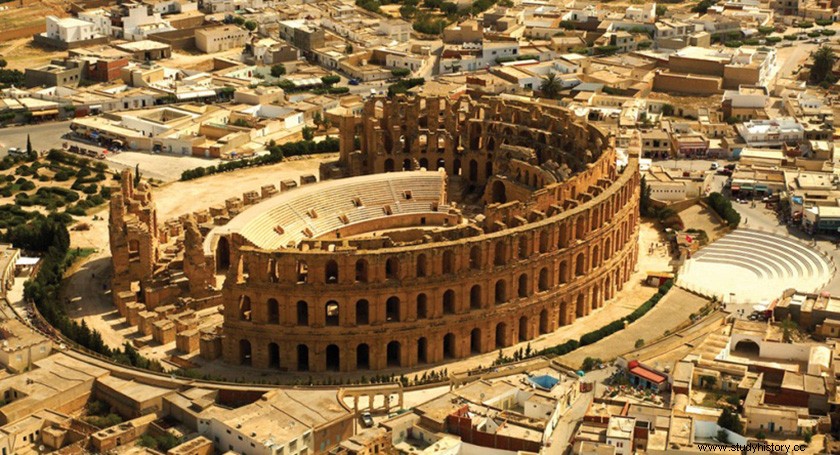
Its dating has been much discussed, due to the lack of the classic inscriptions that its promoters used to leave on this type of building. It is estimated that it was in the midst of the crisis of the third century, hence its short journey of two centuries at most. Its good conservation is thanks to the scarce extraction of stone from the place for the constructions of medieval times. Some 17th century travelers gave information that it was practically intact. Today your visit is highly recommended to learn about the different parts of an installation of this type.
